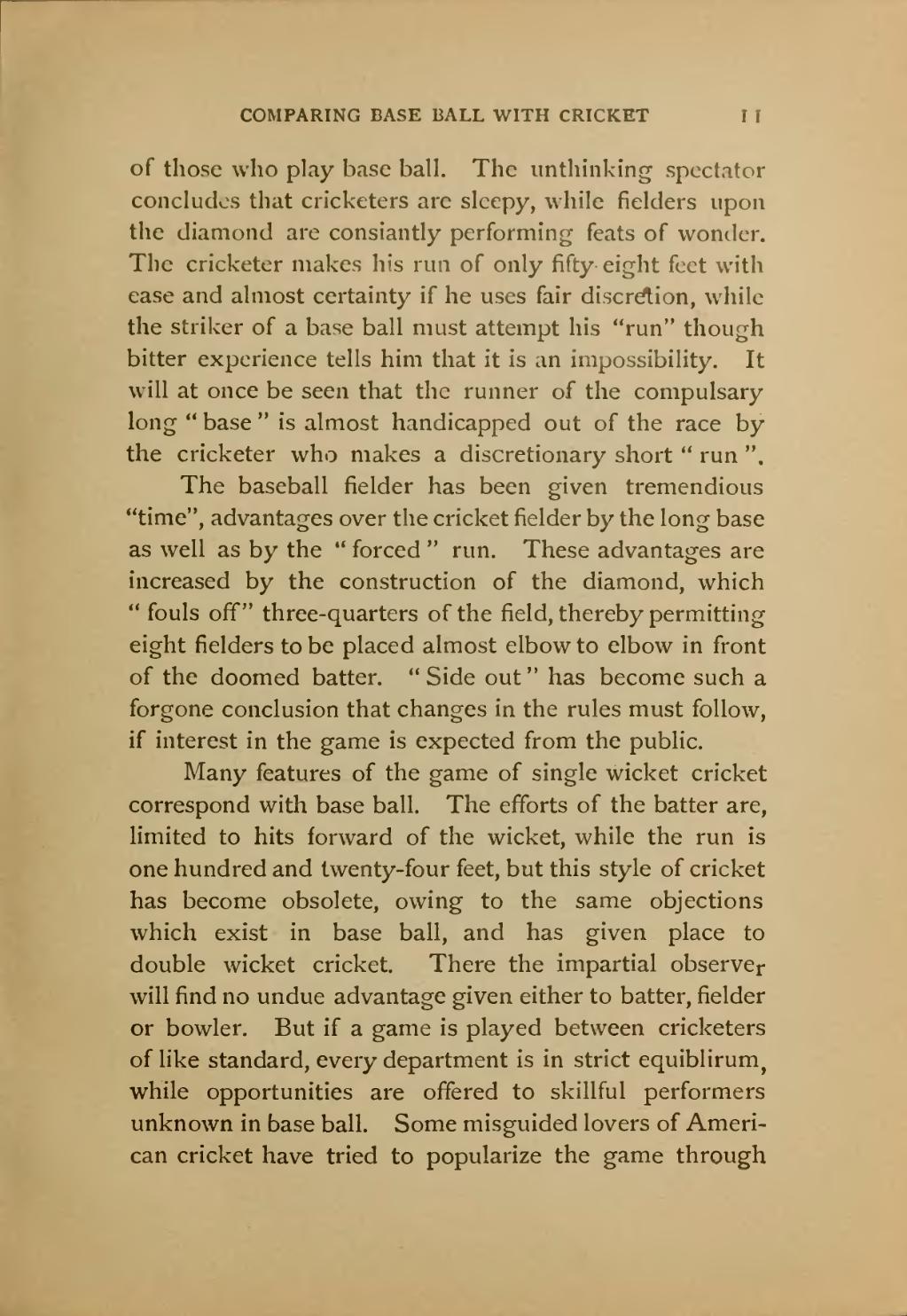of those who play base ball. The unthinking spectator concludes that cricketers are sleepy, while fielders upon the diamond are consiantly performing feats of wonder. The cricketer makes his run of only fifty-eight feet with ease and almost certainty if he uses fair discretion, while the striker of a base ball must attempt his "run" though bitter experience tells him that it is an impossibility. It will at once be seen that the runner of the compulsary long "base" is almost handicapped out of the race by the cricketer who makes a discretionary short "run".
The baseball fielder has been given tremendious "time", advantages over the cricket fielder by the long base as well as by the "forced" run. These advantages are increased by the construction of the diamond, which "fouls off" three-quarters of the field, thereby permitting eight fielders to be placed almost elbow to elbow in front of the doomed batter. "Side out" has become such a forgone conclusion that changes in the rules must follow, if interest in the game is expected from the public.
Many features of the game of single wicket cricket correspond with base ball. The efforts of the batter are, limited to hits forward of the wicket, while the run is one hundred and twenty-four feet, but this style of cricket has become obsolete, owing to the same objections which exist in base ball, and has given place to double wicket cricket. There the impartial observer will find no undue advantage given either to batter, fielder or bowler. But if a game is played between cricketers of like standard, every department is in strict equiblirum, while opportunities are offered to skillful performers unknown in base ball. Some misguided lovers of American cricket have tried to popularize the game through

